UNMANNED SYSTEMS REPORT
BY JAMES CARELESS
UNMANNED SYSTEMS REPORT
Full of Innovative Possibilities
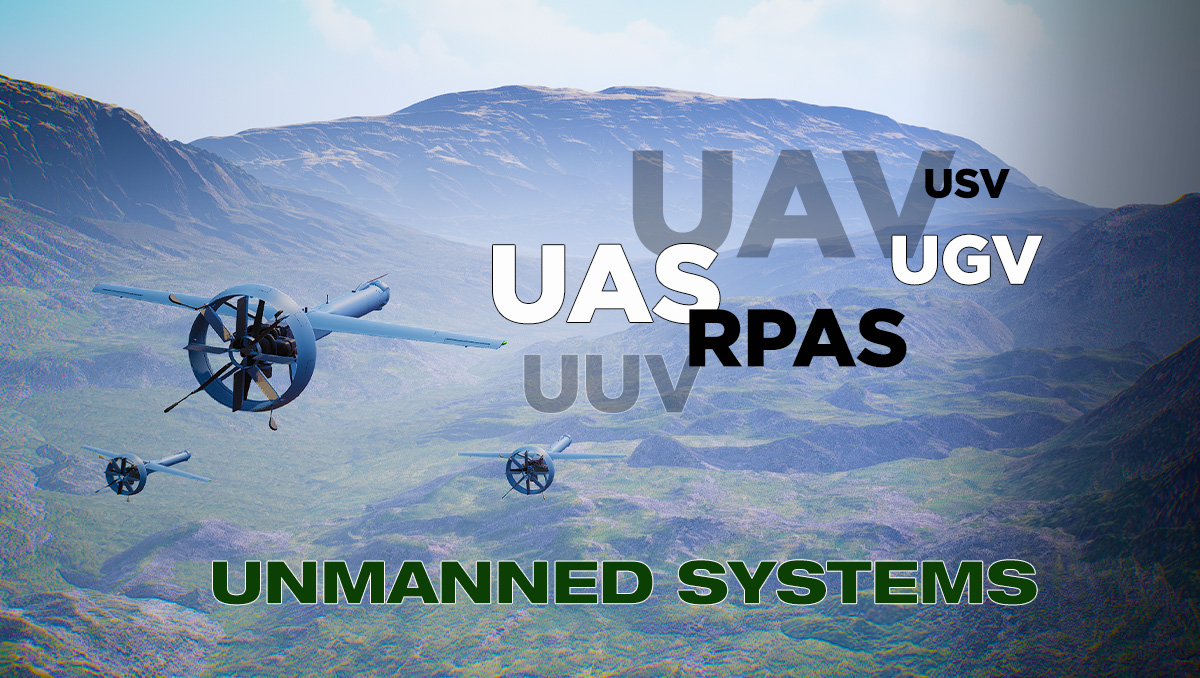 US$12 billion: That’s how much the global military UAV market will be worth in 2032, according to industry experts.
US$12 billion: That’s how much the global military UAV market will be worth in 2032, according to industry experts.
The interest in military unmanned aerial vehicles (UAVs) as a cost-effective platform alternative for military operations – including tactical air support, search and rescue operations, intelligence, surveillance and reconnaissance (ISR) missions – has led to a global surge in their induction into military operations.
UAVs are just part of the unmanned systems market, which also includes ground- and water-based unmanned vehicles. What all have in common is the ability to provide the Canadian Armed Forces (CAF) and other militaries with a wide range of capabilities previously limited to manned operations. Not only can unmanned systems provide many of the same services today — from surveillance and weapons-carrying drones to remotely controlled/autonomous ground vehicles and ships that can support all kinds of missions — but they can do so at lower costs, and without the need to put human operators in physical danger. At a time when military budgets and recruitment efforts are under stress, unmanned systems are more crucial than ever before.
In this CDR annual report on unmanned systems, we will look at the trends and challenges driving the Canadian unmanned systems market. As with our sister report on training and simulation in this issue, we received a tremendous amount of industry input to our research efforts. Here are the responses we received from the participating companies.
READ: UNMANNED SYSTEMS REPORT - IN THE MAGAZINE
CDR: Please tell us a bit about your company and your unmanned system's products.
Ehud Karl Lebenstein
Aeronautics Group
Business Development and Marketing Director:
Leading an industry group focused on unmanned solutions, systems and subsystems, Aeronautics Ltd. Provides integrated turnkey solutions based on unmanned systems platforms, payloads and communications for defense and civil applications. Designed as leading-edge UAS-based solutions, Aeronautics’ systems offer operationally proven solutions for Intelligence, Surveillance and Reconnaissance (ISR) systems requirements. As a pioneer in the field of unmanned aerial systems, Aeronautics broad product portfolio has demonstrated excellent performance and operability. Backed by continuous research and development, these systems are built on three decades of technological and operational experience. Aeronautics Group owned by Rafael Advanced Defense Systems Ltd and Mr. Avichay Stolero.
Through our in-house capability as an UAS integrator with specialist subsidiaries and technology partners, we offer a complete range of subsystems including air vehicles, inertial navigation and avionics, electro-optical payloads (EO), communications, propulsion systems, launch and retrieval systems, command and control units. For the highest-level UAS personnel training, we provide advanced simulation and image exploitation systems. Aeronautics group headquarters are situated in Yavne, in central Israel.
Alain Tremblay
Rheinmetall
Vice-President, Business Development, Innovation & Robotics
Rheinmetall Canada is a proud member of the German Rheinmetall group, Europe’s foremost supplier of defence and security technology and a longstanding partner of armed forces. We offer innovative solutions for vehicle systems and integration, air defence as well as weapon, command and communications, soldier and robotic systems. In addition, our offering includes airport ground support equipment.
Rheinmetall Canada started working on robotics systems back in 2010. At this time, Rheinmetall Canada was exploring the many ways to automate various type of platforms, not only for defence, but also for civilian and space application. A few years later, a special focus was set to develop a platform that would specifically address military needs and would offer a level of autonomy exceeding everything that could have been seen before.
With this in mind, Rheinmetall launched the Mission Master family, a pioneering line of Autonomous Unmanned Ground Vehicles (A-UGVs) designed to support military troops in dangerous missions, difficult terrain, and hostile weather conditions. Every Mission Master vehicle is driven by the proven Rheinmetall PATH autonomy kit (A-kit). This industry-leading technology enables AI-powered autonomous driving and navigation in a variety of modes.
And we got clear feedback from our existing users that the level of autonomy coming from the PATH A-kit, which drives all of our Rheinmetall Mission Master A-UGVs is a huge differentiator.
The Mission Master is really able to navigate autonomously through complex terrain and challenging environment. As an example, it may navigate autonomous in heavy snow, dust, rain or even GPS-denied environment. We were able to demonstrate these features in many occasions during live demos and shows.
Paige Cutland
Kongsberg Geospatial
Vice President of Sales and Marketing
Based in Ottawa, Canada, Kongsberg Geospatial creates precision real-time software for mapping, geospatial visualization, and situational awareness. Kongsberg Geospatial has pioneered powerful new solutions for UAS applications. These include IRIS UxS™ - an airspace situational awareness and UAS control system for BVLOS flight operations, both for individual aircraft and for fleet operations with multiple semi-autonomous aircraft and MDCS, a multi-domain C2 application developed based on the IRIS UxS architecture to allow operators to manage multiple unmanned systems for multi-domain missions; and MIDAS™ - a near real-time system for processing, exploiting, and disseminating (PED) sensor data from Unmanned Systems. Kongsberg Geospatial is a subsidiary of Kongsberg Defence & Aerospace.
John Molberg
Canadian UAVs
Vice President
Canadian UAVs exists solely to provide the ecosystem to integrate UAVs into complex airspace. As such we provide services, consultancy, technology and aircraft to achieve this mission for commercial, civil and military customers. We believe that our exclusive focus is our strength; having an entire team of professionals dedicated to the use and adoption of UAVs / RPAS into Canadian skies. This singular focus has also led to the internal development of two necessary products - the ground based SparrowhawkTM Radar, a low cost mid-range radar capable of airspace deconfliction and TaskerTM, a complete software solution for managing RPAS deployments, operations, re-supply and certification. Further we are the Canadian reseller for Lockheed Martin small RPAS, and channel partner in Canada for the Textron Systems Aerosonde.
Richard Hjelmberg
UMS SKELDAR
Vice President Business Development
UMS SKELDAR, a joint venture between Saab and UMS AERO Group, is Europe’s leading provider of rotary-wing UAS including the NATO-aligned rotary V-200 and the flexible high-performance V-150. Capable of carrying a wide selection of payloads, UMS SKELDAR’s UAS provide solutions to a wide variety of defense, civil security, and maritime sectors globally. The company is headquartered near Basel in Switzerland, with twin manufacturing facilities in Switzerland (Möhlin) and Sweden (Linköping) and offers a comprehensive UAS solutions portfolio. UMS SKELDAR provides total solutions to customers across the globe, including development, manufacture, testing, training, consultancy, maintenance, and support services.
By offering two Vertical Take-Off and Landing (VTOL) rotary-wing platforms, UMS SKELDAR can cater to the specific needs of customers in both civilian and naval domains. Demand for platforms that offer a compact logistical footprint and are capable of carrying out operations without the need for operating infrastructure such as runways or recapture nets has soared in recent times.
The SKELDAR V-200 is the platform of choice for multiple NATO naval forces thanks to its superior intelligence-gathering capabilities when equipped with multiple sensors. Flight times can exceed six hours, and the heavy-fuel 2-stroke engine combined with efficient maintenance procedures and ease of access to the engine compartment allow for highly efficient routine service processes. Rugged components designed to withstand harsh saltwater conditions, ship-based Automatic Take-off and Landing (ATOL), ship-specific Remote Pilot Station (RPS) integration options and a multiple payload carrying capability are just some of the features that make the V-200 the ultimate NATO-aligned rotary platform.
The SKELDAR V-150 has been developed using the best of breed technologies from the knowledge UMS has developed over a long period of time, and supports a wide range of operating scenarios, including across defence, tactical surveillance, homeland security and emergency response operations. Two payload bays offer the possibility of accommodating multiple sensor combinations, ensuring mission objectives are achieved. Intuitive real-time flight and mission management systems offer operational ease of use in a multitude of operating conditions. Designed from the beginning with a modular design in mind, the V-150 provides excellent maintainability whilst offering minimum down and turn-around times during operations. Crucially for supporting civilian customers, the V-150 has a small logistical footprint similar to the V-200 and this in turn opens up a wide array of possibilities for vehicle integration.
The V-150 has been extensively tested to ensure maximum reliability and performance, meaning it offers a best-in-class endurance time of more than five hours. Maximum cruise speeds of up to 120 km/h are achievable, making it the preferred rotary UAS choice for military as well as blue force and civilian operations.
Brandon Tseng
Shield AI
Co-founder/President/Chief Growth Officer
Shield AI is a fast-growing, venture-backed defense-technology company building the world’s best AI pilot. Our mission – to protect service members and civilians with intelligent systems – is accomplished through a software-first approach as we apply our cutting-edge AI pilot, Hivemind™, to our hardware products – a small-unmanned aircraft system (sUAS), Nova 2, and a medium-size vertical take-off and landing (VTOL) UAS, V-BAT. Designed explicitly for runway and equipment-independent launch and recovery in austere environments, V-BAT is seen by customers worldwide as the most tactical, most logistically simple UAS in the world. Hivemind is integrated onboard Nova and has been deployed in combat since 2018, earning the title of “Most Mission Capable Indoor Drone” in the world by joint U.S. and Israeli forces. Hivemind will soon be integrated onboard the V-BAT to further enhance the aircraft’s class-leading capabilities.
Dr. Minda Suchan
MDA
Vice President of Geointelligence
Serving the world from our Canadian home and global offices, MDA is an international space mission partner and a robotics, satellite systems and geointelligence pioneer with a 50-year story of firsts on and above the Earth. With over 2,500 employees across Canada, the US and the UK, MDA is leading the charge towards viable Moon colonies, enhanced Earth observation, communication in a hyper-connected world, and more.
MDA has been delivering Unmanned Aircraft Systems (UAS) solutions to multiple Canadian and international customers since 2008, including the delivery of turnkey UAS services to high demand customers who need to operate in hostile or harsh environments with a near perfect availability rate.
Building on our success supporting the Royal Canadian Air Force (RCAF) and Royal Australian Air Force in Afghanistan with a Medium Altitude Long Endurance (MALE) UAS, MDA has gone on to support a variety of customers through acquisition and in-service support. This includes supporting a fleet of more than 50 AeroVironment RAVEN and PUMA UAS for the Canadian Army and Royal Canadian Navy (RCN).
MDA is also developing unique offerings in the area of unmanned system image exploitation and data analytics for a range of government and commercial customers. We take a platform agnostic approach that allows us to provide the best solution that meets our customers’ needs. This flexibility also allows us to provide UAS services across the spectrum of Mini to Medium-Altitude Long Endurance (MALE) Systems.
Mike Baker
Lockheed Martin Canada CDL Systems
General Manager
Lockheed Martin CDL Systems has been providing software solutions for uncrewed systems for 30 years, dating back to the early ‘90s before the public had ever heard of drones. Our beginnings were as a modest technology startup spun out of Defense Research Establishment Suffield (DRES) that focused on building simple to use ground control software for air and sea target drones.
Since those early days, we’ve expanded our Vehicle Control Station (VCS) software to operate every available group of UAV – including soldier borne UAS, man-packable UAS, tactical UAS, weaponized Medium Altitude Long Endurance UAS and UAS designed to fly in the stratosphere for months on end. Our pedigree is providing control software for US Army, with VCS having provided over 1 million hours of operational flight time of the RQ-7B Shadow and over 1 million hours of operational flight time for the MQ-1C Gray Eagle.
We started our journey with Lockheed Martin in 2012 and have recently re-aligned within the organization to work with the Advanced Development Projects team, known to many as Skunk Works. We’re honoured and excited to be the first group of International Skunks in Lockheed Martin.
In terms of software solutions, today we offer VCSi, which is our most advanced UAS mission planning and control software yet. It is designed to be a flexible, open-architecture platform that can operate on different form factors and can be adapted to different mission sets with our Software Development Kit. It provides an intuitive 3D map-centric interface and a clear picture of the operational airspace and the user’s mission objectives.
In terms of hardware products, Lockheed Martin CDL Systems works closely with other groups within Lockheed Martin that produce the Stalker and Indago 4 unmanned systems.
The Lockheed Martin Stalker is an operationally proven Group 2 Unmanned Aerial System (UAS) that provides unprecedented imaging capability in a variety of contested environments and is in use by Special Forces around the world. Stalker’s class-leading endurance, broad operating envelope, modular payload compliance, vertical take-off and landing capability, and open system architecture allow it to execute diverse and demanding missions while maintaining a small operational footprint and crew.
The Lockheed Martin Indago 4 Tactical Quadcopter is purpose-built for vital missions, deploying with an expanded capabilities suite built to military and security forces requirements. Indago 4 provides 360 degree reconnaissance and surveillance capabilities with the introduction of on-edge computing computing to meet broader 21st Century Security missions. Indago 4 maintains proven mission benefits including man-packable design, low acoustic signature, long-endurance flight, and high quality optics.
In addition, we are in the late stages of development of a GPS/comms-denied vision-based navigation product called Northstar which will be deployed on Indago 4 and Stalker to enable operators to continue their mission in contested environments during both day and night.
David Shea
Kraken Robotic Systems Inc.
Executive Vice-President Products
Kraken Robotic Systems Inc. (Kraken) is a marine technology company providing advanced sonar and laser systems and subsea power solutions for Unmanned Underwater Vehicles for military and commercial applications. The company has developed world-leading innovation technology called Synthetic Aperture Sonar (SAS) – a revolutionary underwater imaging technology providing ultra-high-resolution imagery at superior coverage rates that dramatically improves seabed surveys. Kraken’s series of SAS products, AquaPix®, offers comparable performance to existing high-end military systems at a fraction of the cost. This allows Kraken to deliver the highest quality at the lowest cost per pixel on the market.
Kraken’s KATFISH™, is a high speed, actively stabilized Synthetic Aperture Sonar towfish that operates at speeds up to 10 knots. The high-speed capability of KATFISH when compared to the slower moving ROVs or unstabilized towed side scan sonar and AUVs, greatly increases Area Coverage Rates (ACR) therefore reducing operating time and cost. KATFISH™ incorporates Kraken’s latest generation Real-Time SAS processor (RTSAS), which enables real-time processing of SAS imagery and bathymetry. On-board Automatic Target Detection and Classification means that contacts can be viewed directly on the ship as it is collected, or remotely from a mothership or shore-based command station.
KATFISH™ provides unprecedented high-resolution ACR of up to 4 km^/hr with 1.9 cm x 2.1 cm constant resolution across ranges up to 200 m per side with simultaneous 3D bathymetry.
CDR: How strong is the Canadian unmanned systems market? How is it doing in the aftermath of COVID-19, with respect to issues such as supply chain delays and human resources?
Ehud Karl Lebenstein
Aeronautics Group
One should address and differ between the Commercial market and the Defense market. While the 1st appears to be highly innovative, and in some ways pioneering the UAS "private sector" market, the latter is quite the opposite. The Canadian UAS defense procurement is considered as conservative, ITB driven characteristics, which will most likely be even more fortified in the "Post COVID-19" era.
Alain Tremblay
Rheinmetall
Fast-paced growing market, just like the early days of UAVs a decade ago. We expect similar growth in 5-10 years. Canada is currently using the IDEaS program to help educate themselves on the unmanned ground vehicles market and stimulate the Canadian innovators on that matter
Canada is also exploring unmanned systems for surface (sea) applications. The RCN’s Naval Off-Board Anti-Missile Active Decoy (NOMAD) Program has been awarded to Rheinmetall Canada. Under this program, Rheinmetall Canada delivered USVs that can be used as decoy systems. We remain innovative in order to deliver systems in a timely manner and to overcome manpower shortage. To address the supply chain issues, we’ve worked on several partnership with both local and international partners. These partnership gives Rheinmetall Canada and its partners flexibility to leverage resources (human and material) to accommodate each other. Pre-COVID, Rheinmetall Canada acquired Provectus Robotic Systems to secure key capabilities around unmanned systems. This strategic acquisition happened to be a very useful to support the product development during the pandemic situation. Since COVID/Working from home allows us to expand our talent pool not being limited geographically.
John Molberg
Canadian UAVs 
The Unmanned market weathered COVID reasonably well. Unfortunately, there are still a number of regulatory hurdles to widespread commercial use of UAVs in Canada and worldwide, so the role of UAVs is not as useful as it could be. With that said, Transport Canada is setting worldwide benchmarks for the integration of UAVs into commercial airspace, and that is only enabling us further. We are the first and only company to have a true BVLOS permit for operation across Canada and that is a testament to the forward leaning of Canadian institutions and governments.
Richard Hjelmberg
UMS SKELDAR
Canada has always been a pioneering nation when it comes to unmanned systems. Unmanned Aircraft Systems (UASs) provide both a defense solution to address Canada’s many opportunities where UASs can be used to collect data. Although the COVID-19 pandemic has influenced organizations in every sector globally, the future is looking much brighter in terms of growth opportunities. I am seeing governments and businesses, in the defense and civilian sectors, pushing forwards with UASs for a wide variety of programs. I expect this growth to continue into 2023 and beyond.
Brandon Tseng
Shield AI
I would say that supply chain issues adversely effected most global markets, with unmanned systems being no exception. Despite these challenges, we’ve been able to build meaningful partnerships in Canada, to include one with Kongsberg Geospatial that allowed us to demonstrate V-BAT's capabilities for the Canadian Coast Guard earlier this year. Along with Kongsberg, we jointly responded to the Royal Canadian Navy’s ISTAR UAS program request for information in 2021 and are looking forward to completing follow-on steps to compete for this contract.
Dr. Minda Suchan
MDA
COVID-19 has understandably caused some program delays as suppliers and customers transitioned to the new paradigm of working in a pandemic, however there is strong interest by the Canadian Government to procure operational and reliable UAS. Currently Canada has multiple UAV procurements in progress including the RCAF RPAS (Remotely Piloted Aircraft System), RCN ISTAR UAS (Royal Canadian Navy Intelligence, Surveillance, Target Acquisition and Reconnaissance UAS) and Canadian Army Next Generation Small UAS. There are also important civil applications and procurements including Transport Canada’s Research and Development (R&D) program of future North Atlantic Right Whale Monitoring solution, and the commercial sector is expanding rapidly with small UAS in areas including the monitoring of oil and gas operations, mining sites, energy transmission lines, and wildfires.
Mike Baker
Lockheed Martin Canada CDL Systems
The unmanned systems market in Canada is growing, although not as fast as we are seeing in many of the international markets, specifically the US, Australia and Europe. In general, we are seeing that the entire industry is still challenged with supply chain issues. It has not, however, impacted our team’s ability to deliver on time for our projects. From a Human Resources perspective, software engineers were always in high demand and that has only increased in the last few years especially as the opportunities to work remotely have increased. Despite that, we’ve continued to attract exceptional talent who are excited to work in the field of unmanned systems. We continue to grow our team here in Calgary.
David Shea
Kraken Robotic Systems Inc.
The Canadian unmanned systems market is robust & continues to both expand and mature, both in the underwater space as well as the ground and aerial space. Global geopolitical developments with adversarial nations such as Russia and China have created a need for better intelligence along our borders, particularly in the North where underwater mapping and monitoring is extremely challenging and historically lacking. Coupled with a global demand for unmanned systems for ocean applications, we are continuing to see to growth drivers in Canada’s Blue Economy. SMEs in Canada are producing world leading technological innovations and exporting them around the world.
While the demand for innovative technology has risen drastically in the wake of COVID-19, the unmanned systems market has been particularly impacted by supply chain delays and the increasing demand for specialized talent. There was already a shortage of electronic components prior to the COVID-19 pandemic in sectors such as Electric Vehicles, The pandemic exacerbated the problem, and it is ongoing with a global silicon chip crisis now affecting many industries.
The COVID-19 pandemic also saw a simultaneous boom in the tech sector (particularly in software as a service providers), paired with a dramatic rise in remote work in the tech sector, which enabled highly qualified personnel to work for employers far outside their geographic region. The result was that employers in the unmanned vehicle space were now competing against employers all over the world instead of just those in their region. Software developers in particular have been a challenge to recruit and retain as a result.
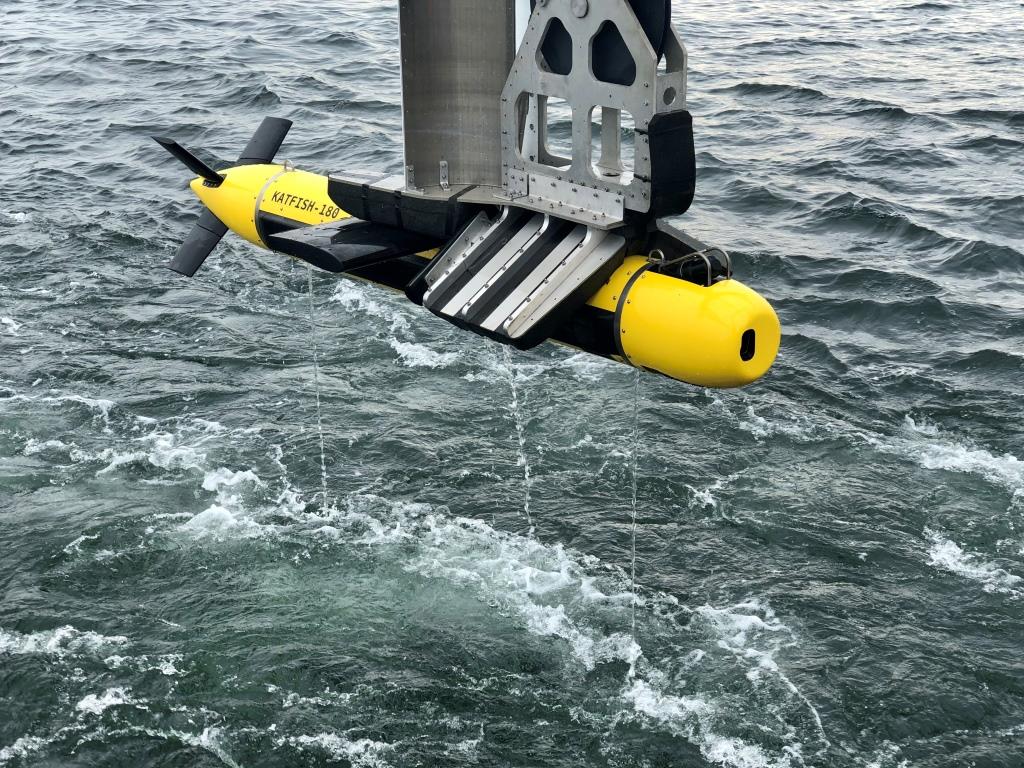
CDR: What are some of the new technologies driving the unmanned systems market?
Ehud Karl Lebenstein
Aeronautics Group
Some of the main UAS trends include:
• Launch and Recovery methods (VTOL) • Comms- MASH/SATCOM/Denied GPS operations • Sensor miniaturization- EO/IR, SAR, MPR, Commint • Mission management systems- AI, BIG Data
Alain Tremblay
Rheinmetall
Technology development under the big Artificial Intelligence (AI) umbrella is definitely a huge enabler for unmanned systems. This technology allows data fusion and processing at the edge that we could not even imagine a few years ago. Now, AI performance is currently limited by the available on-board processing. So, any development that aims to improve processing power (GPU) and make it more robust/ruggedized is also an enabler.
No doubt that energy is also a hot topic. On one end, we need to increase the available on-board power. As such, development in the area of batteries, fuel cells, etc. is extremely important. The other approach to address the energy issue to reduce the power consumption.
Last, but not least, is the sensing aspect. Unmanned systems need to be able to characterise the environment to navigate. So, improvement to sensors, especially passive sensors, is definitely of interest for the unmanned system market.
Paige Cutland
Kongsberg Geospatial
We think the technologies that will allow a business to scale its operations will be the next step.
Detect and Avoid (DAA) Technology is a defining enabler I have often referred to as the holy grail of UAVs. DAA allows for UAV users to understand the realtime activity in their airspace and thus avoid any conflicts. Transport Canada has very clear guidelines for DAA. In 2020 our internally produced Sparrowhawk Radar was approved by TC for use as a DAA. Today, its the only long range approved DAA on the market, clearing 8NM of airspace in every direction.
Hybrid Quads are also a gamechanger. These aircraft, such as the Aersonde HQ, provide the benefits of fixed wing flight, and the convenience of vertical take off and landing. HQ technology is forcing capability into smaller form factors and a NATO Class 2 aircraft can now be delivered in a Class 1 size category. This not only reduces cost, but operational footprint. HQ technology is changing the way DND will procure UAVs.
.jpg)
Richard Hjelmberg
UMS SKELDAR
The Vertical Take-Off and Landing (VTOL) market has a huge potential to continue growing, and that will come with new sensors and capabilities. At UMS SKELDAR, for example, we continuously refine our systems to increase endurance and decrease the weight of our systems, which will allow for better performance. Payload capabilities also continue to improve, allowing for better, more sophisticated sensors that will allow VTOL platforms to continue to establish themselves as the most important tool in the market, both for defense and security and civilian capabilities.
Over the next 12 months and beyond, I expect developments in sensor software to experience exponential growth as organizations realize the benefits they can bring to missions. By way of an example, I anticipate that artificial intelligence (AI) will increasingly play a part in sensor development, especially in enhancing the ability to gather and analyze larger amounts of data. The result: organizations will be able to make better decisions more quickly.
Brandon Tseng
Shield AI
First, I’d say AI and autonomy technology for swarming and just a general shift to a software-first approach for operation in GPS/communications-denied environments. Shield AI has been focusing is on the development of autonomous behaviors applied to specific mission sets – such as wide area surveillance, clearing buildings, dogfighting fighter jets. I think this is essential when developing technology to take on the challenges of the future. Other technologies include electric VTOL capabilities since they can be used as an air taxi or logistics delivery, heavy fuel engine technology that provides an extra layer of safety at sea.
Dr. Minda Suchan
MDA
Several areas that are becoming increasingly important are the Detect and Avoid (DAA) and Sense and Avoid (SAA) technologies and the use of artificial intelligence to increase the degree of automation to allow UAS to operate safely within commercial airspace. The future availability of high bandwidth SATCOM, including in Canada’s North, will open up new opportunities to collect and exploit high bandwidth data from current and novel sensors.
As the volume of data explodes, the challenge will be to provide accessible, actionable information at even better refresh rates while maintaining a low cost of operation. More and more, our customers are looking for value-added information products rather than unmanageably huge volumes of unprocessed raw data. Timely fusion and persistence of UAS Intelligence Surveillance and Reconnaissance (ISR) data with other sources such as space-based sensors are driving novel information solutions for our customers.
Mike Baker
Lockheed Martin Canada CDL Systems
One of the main new technologies in the marketplace is Vertical Take-off and Land (VTOL), which great simplifies the logistics and operations of UAS. This started with quadcopters and the technology has been scaling up to Group 2 and Group 3 platforms that are now offering hybrid VTOL capabilities allowing operators to launch & recover from smaller launch areas and have removed the need for additional logistics equipment such as rail or bungee launchers and landing equipment such as runways, nets or hooks. This innovation is really opening the UAS market to new users and mission sets.
Innovations in propulsion technology are improving the endurance of UAS systems which are allowing users to support longer missions with less assets. Solar technology is a great example of this, where larger UAS can stay aloft for months at a time. Another great example is our own Stalker VXE30 which uses a propane-fueled Solid Oxide Fuel Cell (SOFC) and claimed a new world endurance flight record for Group 2 systems earlier this year remaining aloft for 39 hours, 17 minutes and 7 seconds by utilizing an additional propane fuel tank installed under a wing for the flight.
Another new technology is the development of powerful small form factor supercomputers that are allowing users to push mission processing, such as target and threat recognition, directly to the edge of their systems. By putting these algorithms onboard, we can reduce the amount of data that needs to be sent to the ground control station for additional processing which reduces the bandwidth needs on the network. We’ve designed our Indago and Stalker platforms to provide onboard edge computing to ensure that our customers can take advantage of the best-of-breed AI/ML algorithms for their mission sets.
David Shea
Kraken Robotic Systems Inc.
Energy density and availability has been steadily increasing, with energy density and cost improvements in Lithium-Ion batteries thanks mostly to the Electric Vehicle markets. More exotic energy solutions have been becoming available, such as fuel cells (Hydrogen, Methanol, etc.)
Navigation solutions are improving in performance and coming down in cost, which is particularly important for the underwater space where GPS and other radio frequencies (such as WiFi / 5G / etc.) do not work. AI - tomorrow’s unmanned systems will be able to better communicate among themselves and make their own decisions on basic functions, such as navigation.
The advent of AI-related technologies thanks to Graphic Processing Units (GPUs), enabling “on the edge” AI such as Deep Learning and Machine Learning. While these algorithms have been around in concept since the 60’s and 70’s, only recently has the computing capacity been sufficient to train neural networks and deploy these solutions.
CDR: What initiatives (such as government procurements) are spurring sales these days?
Ehud Karl Lebenstein
Aeronautics Group
The main UAS defense program ahead is the RCN ISTAR (RFP to be issued in 2023)
Alain Tremblay
Rheinmetall
The Unmanned Ground Vehicles are still considered emerging technologies in the military domain. Most of programs out there are exploratory and low quantities for the end-user to educate themselves and define their potential use cases.
Rheinmetall Canada recently won bid for spiral 3 of UK’s Robotic Platoon Vehicles Program. For the third time, the British Ministry of Defence has awarded Rheinmetall a contract for its Robotic Platoon Vehicles (RPV) program. Rheinmetall Canada’s focus is currently on the delivery phase of the Rheinmetall Mission Master SP – Surveillance Autonomous Unmanned Ground Vehicles (A-UGVs). This Surveillance variant for the UK is built with an ISTAR (Intelligence, Surveillance, Target Acquisition, and Reconnaissance) mission module.
Paige Cutland
Kongsberg Geospatial
The Canadian RCN ISTAR project will be a key acquisition in 2023 for the Canadian industry given the high ITB requirements.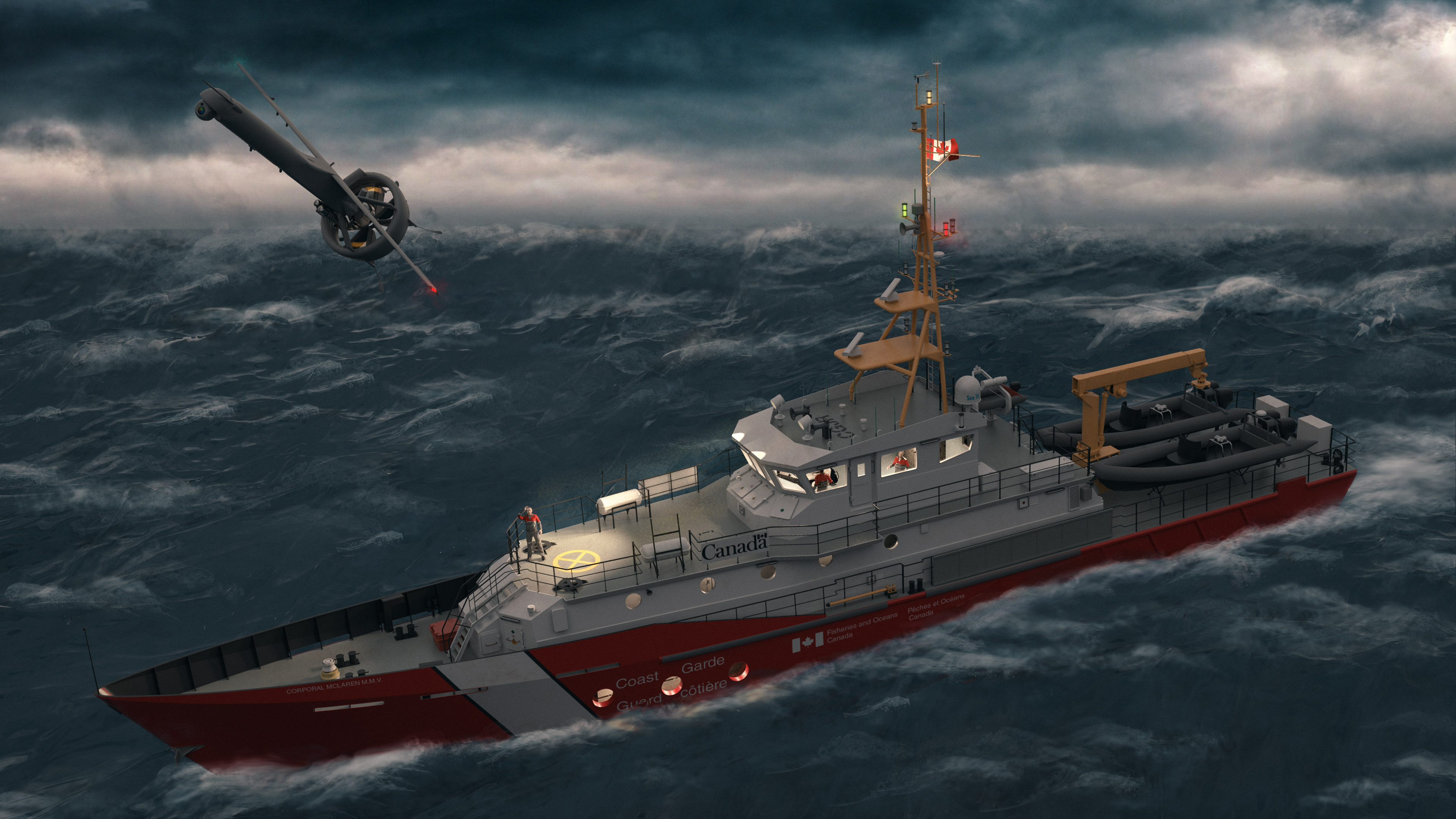
John Molberg
Canadian UAVs
The government has identified UAVs, or RPAS, as a key industrial capability. This shines a light on this industry and allows for Canadian innovators to push for government funding, and ITB credits. Canadian UAVs and project SkySensus has received a massive cash and in-kind ITB investment from Arcfield Canada to develop technology for RPAS. This type of investment is a game changer for Canadian capability. Simply put, this is government policy "done right".
Richard Hjelmberg
UMS SKELDAR
Over the last few years, Transport Canada, a strong supporter of unmanned systems, has been working alongside a wide variety of organizations towards the integration of safe and secure Unmanned Aircraft Systems (UASs) into Canadian skies as part of a modern national civil aviation system. It has been working in collaboration with industry and research and development partners on projects to test the technologies and develop regulations and standards to ensure safe use.
Overall, through our understanding, Transport Canada’s top priorities have included developing regulations for lower risk Beyond Visual Line of Sight (BVLOS) operations in rural and remote areas, understanding the security threats posed by UASs at airports and other critical infrastructure, supporting economic growth and increasing public trust. In addition, the Ministry of Defense continues to support several initiatives designed to trial unmanned systems.
Brandon Tseng
Shield AI
The conflict in Ukraine has changed attitudes within the defense sector globally. We see low-cost drones taking out other, often exquisite assets. Every country in the world is now thinking about military modernization and how they will operate in environments where GPS and communications will be jammed. AI Pilots play the leading role in those environments. Another driver behind increased sales is the need to be prepared for potential major conflict in the Indo-Pacific as the PLA ramps up its military activity in the South China Sea near Taiwan. We need ISR assets to keep eyes on Taiwan as it’s in a vulnerable situation with aggression from PLA forces looming.
Dr. Minda Suchan
MDA
In addition to procurement plans, a key element driving the growth of Canada’s Remotely Piloted Aircraft sector is the involvement of Innovation, Science and Economic Development (ISED) Canada and its successful Industrial Technological Benefits program. We believe Canada has the potential to develop a robust industry and ecosystem in areas like UAS command and control, payloads, and platforms. This complements MDA’s position as a prime contractor and system integrator, and also allows us to export Canadian technology solutions to international customers.
David Shea
Kraken Robotic Systems Inc.
Canada’s Innovative Solutions Canada (ISC) Testing Stream and the Pathway to Commercialization framework have both been significant enablers for getting cutting edge technology into the hands of government departments much more quickly than traditional procurement cycles.
In Canada, the Supercluster Initiative, and the Ocean Supercluster in particular, has been a significant boon to the blue economy, enabling several industry-led collaborative projects in the unmanned systems space.
One procurement program of note within Canada is the Remote Mine Disposal System (RMDS) – this program has been in various forms for the better part of 25 years within Canada, however it appears to finally be moving through the procurement process, with the Government of Canada noting that they intend to award this landmark contract by the end of 2022. This would be Canada’s first major procurement of unmanned maritime systems, and first ever procurement of unmanned mine disposal systems.
CDR: What unmanned systems has your company sold worldwide to date, and what trends/demands are you seeing in the marketplace; both defence and civil?
Ehud Karl Lebenstein
Aeronautics Group
From its small electrical Orbiter 2 and 1k and up to its MALE, Dominator platform, Aeronautics had been designing, manufacturing, delivering and supporting unmanned programs for the past 25 years, worldwide. Equatorial to Arctic climate, Defense and Civil users, Aeronautics systems and corporate culture had proven its superior relevancy in general and in the Tactical segment in particular.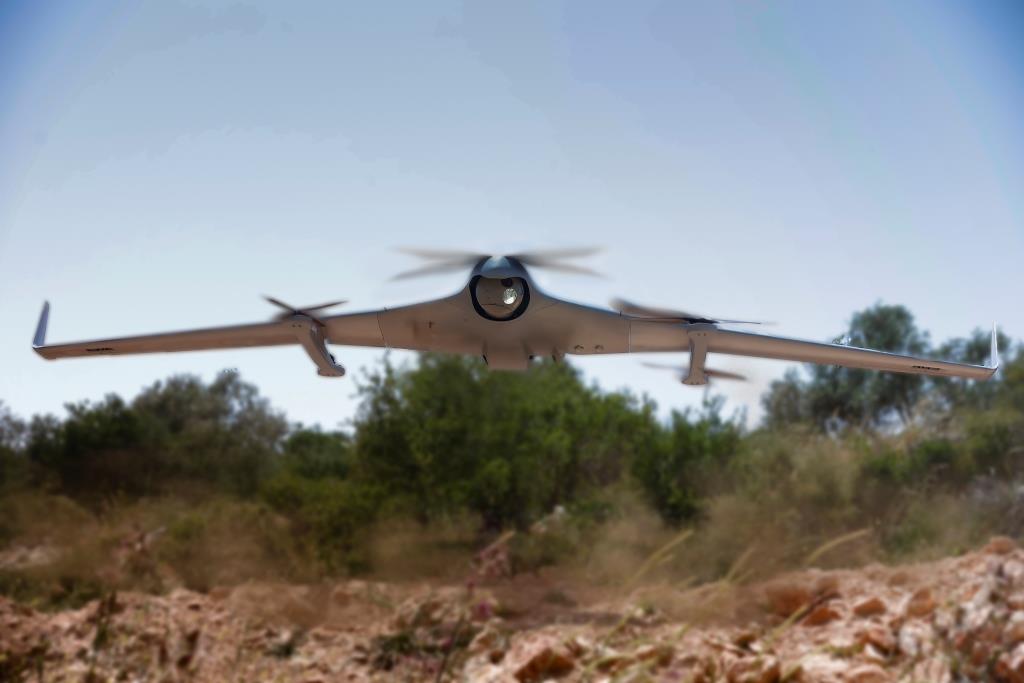
Alain Tremblay
Rheinmetall
The Mission Master SP was delivered in 8 countries until now. UK and Canada are the ones we can disclose at the moment.
Among the sales, we can find: • Multiple Mission Master units in cargo configuration • Multiple Mission Master units in Surveillance/ISTAR config • Multiple Mission Master units with Fire Support modules • Multiple PATH A-Kit equipped vehicles, other than the Mission Master, such as Polaris MRZR, Wiesel, Fat truck, and Ford Ranger.
We see a trend for: • logistic convoy and resupply operation on legacy platform • Passive sensing for navigation • Surveillance UGV since this configuration need to deal with a lot of data coming from sensors and AI technology helps with such challenge • Standardized interfaces/C2 such as ATAK as the main controller • Swarming (i.e 1 operator in command of multiple UGVs)
Paige Cutland
Kongsberg Geospatial
We sell ground control stations and sensor data management solutions worldwide, the US being our largest market.
John Molberg
Canadian UAVs
We are the small UAV reseller for Lockheed Martin in Canada. We are also the channel partner for the Textron Systems Aerosonde in Canada. Both of these offer civil and defence applications across Canada. When paired with our Canada wide BVLOS permit, we are able to offer both products in tandem with our Sparrowhawk Radar as a true wide area UAV capability. In 2021, we conducted 120 km2 of mapping in one Canadian oil sands mine as a benchmark project demonstrating how to make aerial inspections safer and more affordable. This project has created a knock-on effect in other industries such as power distribution and rail. The sky is truly the limit for UAVs in Canada.
Richard Hjelmberg
UMS SKELDAR
UMS SKELDAR has had fantastic successes such as the German Navy and Belgian and Netherlands Navies in both the maritime and civilian domains, with our forward thinking and continued innovation securing us a position at the forefront of the global maritime Unmanned Aircraft System (UAS) market.
Some recent examples of these successes include: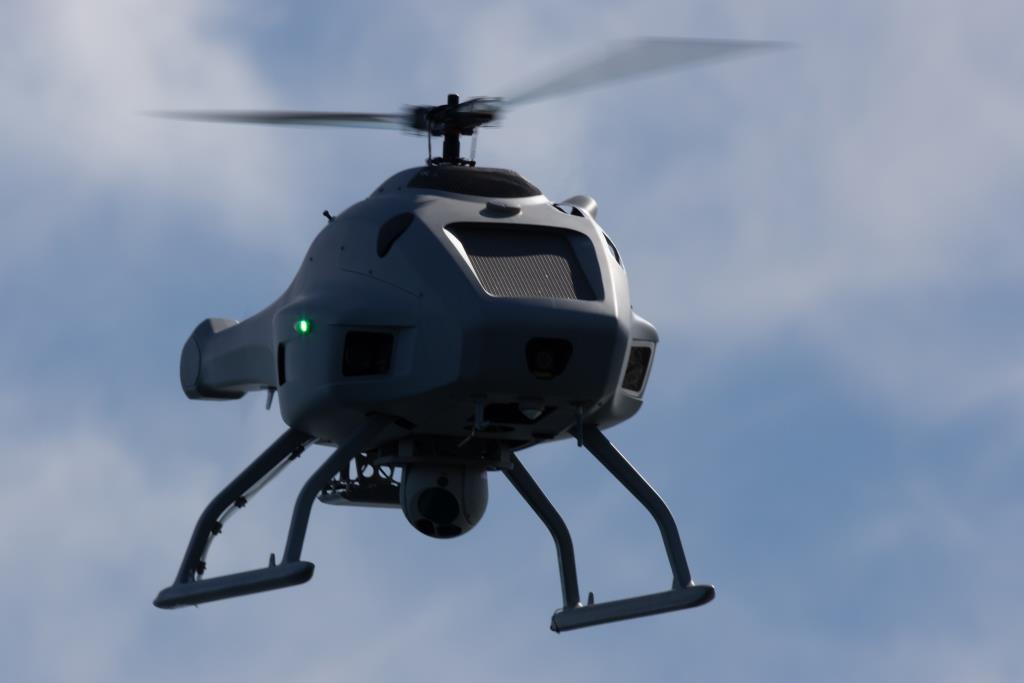
In November 2021, The Federal Office of Bundeswehr Equipment, Information Technology, and In-Service Support (BAAINBw) concluded a contract with ESG Elektroniksystem- und Logistik-GmbH as the main contractor for the procurement of three UASs, introduced in the Bundeswehr under the name "Sea Falcon", for the K130 corvettes of the German Navy.
With the implementation of the project "Reconnaissance and Identification in the Maritime Operational Area (AImEG)", the corvettes' capabilities for imaging reconnaissance have been significantly expanded: in the future, objects can be detected and identified by using the Sea Falcon far beyond the on-board sensor system.
One UAS consists of two SKELDAR V-200s, a ground control station integrated on the corvette from which the aircraft is controlled, and equipment including tools and spare parts.
Alongside this, in October 2021 UMS SKELDAR’s V-200 successfully completed five-day long surveillance flight trial demonstrations aboard the OPV Turva as part of the Valvonta2 project led by the Finnish Border Guard and funded by the European Maritime and Fisheries Fund. The project aimed to achieve an understanding of how authorities could use UASs for diverse and demanding operations at sea both now and in future scenarios.
As part of the trials, UMS SKELDAR’s V-200 completed multiple operational flights and successfully demonstrated a range of features including automatic take-off and landing (ATOL) capabilities; vessel identification at different ranges and altitudes; search and rescue during both day and night; AIS; and transponder demonstrations. To perform the missions, the SKELDAR V-200 was simultaneously carrying a multiple sensor suite of Automatic Identification System (AIS), Wescam MX-8 Electro Optical and Infrared (EO/IR) sensors as well as the high-capacity Leonardo Pico-SAR Synthetic Aperture Radar.
In terms of market trends, UASs are increasing in popularity not only in the military and maritime domains, but also in civilian sectors, as organizations realize the benefits they can bring. According to Precedence Research, the UAS market is expected to surpass US$ 36 billion by 2030, with growth anticipated at a CAGR of 14% from 2022 to 2030. This growth is largely due to the penetration of UASs throughout the military sectors into civilian industries. New innovations such as the integration of artificial intelligence and machine learning are also propelling the market growth.
Overall, organizations are increasingly expanding their requirements to not only include a Vertical Take-Off and Landing (VTOL) UAS, but also training and maintenance within a single solution. At UMS SKELDAR, we are already thinking this way. The dynamic nature of the mission space, especially in the military and maritime sectors, demands that UAS manufacturers continually improve their services in order to stay ahead of the industry and associated regulations. For UMS SKELDAR, our forward thinking and continued innovation has secured us a position at the forefront of the global maritime UAS market – arguably one of the most exciting sectors to be working in today.
Brandon Tseng
Shield AI
Both Nova and V-BAT have been sold to partner nations’ military and government entities. We are seeing a demand for true expeditionary capabilities – so more than just “runway independence,” but a minimal logistics footprint and minimal manning requirements. That, along with its patented ducted-fan design, is what sets V-BAT apart from competitors in the UAS space. Our customers are also excited that because we are integrating our Hivemind AI pilot on V-BATs, they will reap benefits of future software updates that constantly improve the platform, similar to when someone buys a Tesla.
Dr. Minda Suchan
MDA
MDA has provided full turnkey Unmanned Aircraft Vehicle (UAV) services to the Canadian and Australian governments as well as European customers. In defence markets, the “force multiplier” effects that UAVs provide are a key driver for the demand of UAV platforms and services. UAVs are also an important complementary capability to the manned airborne aircraft enabling Commanders to utilise an alternative airborne ISR platform without placing personnel in harms way or putting expensive aircraft at risk. .jpg)
David Shea
Kraken Robotic Systems Inc.
Kraken has sold a number of KATFISH intelligent towed mine hunting systems to NATO Navies, including a significant contract with the Royal Danish Navy and the Polish Navy. In the case of the RDN, the KATFISH system is being equipped onboard the Danish fleet of unmanned minehunters, the MSF and MSD class. These
In the defense market, there are two notable trends; firstly, mine hunting is no longer a “nice to have” but is rapidly becoming a “must have” capability, thanks to real world threats from adversarial nations. Secondly, the nations that *do* have mine hunting capabilities are recognizing that their existing systems are aging, and in need of upgrade, so there is a significant opportunity in mine hunting technology refresh and replacement programs.
In the civilian market, the massive growth in offshore wind energy, as well as deepwater oil and gas exploration, has led to an increase demand for unmanned systems and higher resolution data, particularly for asset integrity monitoring. We are no longer seeing “military” as the cutting edge, since the pace of technology development has exceeded the pace of military procurement. Thus, we are now seeing more cross-sectoral usage of technology, where there are no longer “military” and “civilian” systems, but rather the military is leveraging the use of off the shelf civilian technologies.
CDR: What are the main obstacles to growth in this market? How has the pandemic affected its growth?
Ehud Karl Lebenstein
Aeronautics Group
As mentioned above, the tension between Canada's ITB's on one hand and the desire in having an operational, combat proven, "of the shelf" solution on the other.
Alain Tremblay
Rheinmetall
• Traditional procurement timeframes do not match the pace of technology evolution • New technology/Unmanned systems not part of current doctrine, slowing down the adoption curve • Trust has to be built between men and unmanned systems i.e how can I trust this machine as a “wingman” or partner like I do with a colleague.
Paige Cutland
Kongsberg Geospatial
The pace of government regulation is still the restriction on growth in the applications of UAS technology.
John Molberg
Canadian UAVs
The primary obstacles to growth are regulatory, and rightfully so. At Canadian UAVs, we believe UAVs should benefit from, and be guided by, the 100+ year history of aviation in this country. We work actively with Canadian governments and regulators to demonstrate the art of the possible, aligned with the safety precedent of manned aviation. In our view, the largest impediment is actually the disconnect between the airworthiness of small drones, and large ones. We are working with our SkySensus partners at the BVLOS Innovation Centre to help bridge this gap and give manufacturers realistic airworthiness targets to align with.
Richard Hjelmberg
UMS SKELDAR
With numerous application areas, many will wonder what has delayed widespread UAS deployment across civilian sectors especially. One major obstacle is regulations: in many countries, it is still illegal to fly over populated areas, although legislation is evolving rapidly as regional restrictions are eased and more is understood about UAS from an operational safety perspective.
There are projects that have happened or are ongoing that are assessing how UAS platforms can be safely integrated into controlled manned airspace, such as the ECARO project previously mentioned.
Brandon Tseng
Shield AI
The pandemic really hasn’t affected our growth trajectory. When you have product-market fit like Shield AI does, the main challenge is really maintaining the excellence we are so proud of while we ramp and scale nearly every aspect of our business. Excellence in everything all the time is a really hard thing to do when you’re taking a business from 10 to 100 to 1000 to 10,000 in a short period of time. Our aim is to make our service members proud, make our customers proud; and to continue to do this even as we exponentially scale the operation of the business.
Dr. Minda Suchan
MDA
Complex and lengthy regulatory process can really slow the approval of UAV operations and make it very difficult to operate UAVs in the same airspace as piloted aircraft. As an example, rules for operating larger UAV systems are approved on a case-by-case basis in most countries, including Canada. We are very happy to see Transport Canada is leading an effort to understand the complexity of such operations to try to simplify and modernize processes. Ideally, regulations for UAV operations within a certain threshold of size, weight, and capability will achieve the same level as piloted aircraft, unlocking additional markets and applications for UAV systems.
David Shea
Kraken Robotic Systems Inc.
• Supply chain • HR challenges • Access to markets for growth
CDR: Where do you see new opportunities for unmanned systems?
Alain Tremblay
Rheinmetall
True to its philosophy of being client centric, the unmanned systems development is first and foremost influenced by the customer feedback and current and future operational needs. We seek to get this feedback either via our direct access to existing customer (fielded systems) or through organised demonstrations/trials. In Canada, the IDEaS program is our main driver. We’ve work specifically the Man-Unmanned Teaming (MUM-T) to ease integration of UGV in the troops. There are also plenty of potential use of our unmanned systems in the commercial/industrial market, such as the mining industry. The British Army has ended the RPV program and merge the next step under the HMT program where their intention is to equip the 16th air assault brigade to be the first RAS (robotic autonomous systems)-enhanced brigade. This will be achieved by 2025 under a BATSO approach (Buy and try at scale, operate)
John Molberg
Canadian UAVs
In my view, the greatest area for long term growth of unmanned systems is in logistics and transportation. Moving people and products with robotic aviation will be the greatest area of application for unmanned systems beyond the next decade. Our work today helps to demonstrate the crawl, walk and run approach towards that future. Investments by governments and DND into UAVs, airworthiness, DAA and training are tremendous enablers for that future.
Brandon Tseng
Shield AI
Without question, international conflict is driving UAS deployments and general demand for affordable, capable, expeditionary unmanned assets. The war in Ukraine has elevated the UAS discussion to a global stage and has shown us that the most compelling opportunities exist when companies shift focus and pursue ways to combine program-and-platform- agnostic software solutions with cutting-edge unmanned aircraft. That’s what Shield AI is doing with the integration of our Hivemind software on V-BATs and larger classes of aircraft. China has made clear their intentions to develop autonomous 6th generation military aircraft and it is clear America and our allies will have to keep pace.
Dr. Minda Suchan
MDA
The benefits of UAVs in defence operations has become quite apparent over the last decade. As regulatory reform proceeds to allow for the safe use of UAVs in civil airspace, there is enormous potential to move many of the routine and more dangerous tasks to UAV systems. UAVs are a complementary capability to the existing Manned Airborne ISR.
We see untapped opportunity in unlocking information buried in unmanaged quantities of data. As processing power becomes less expensive and closer to the edge, much of the labour-intensive data management currently performed by defence and commercial customers will be done by algorithms, exploiting Canada’s leading role in the development of artificial intelligence capabilities.
Mike Baker
Lockheed Martin Canada CDL Systems
It is clear that there is a need for UAS that can operate in contested environments providing higher survivability than the systems in today’s market. Systems that have reduced noise/emissions signatures, that can withstand electronic warfare attacks, and can operate without the need for GPS/GNSS are necessary in the near-peer conflict. This is an area where we are focused with our Indago, Stalker and Northstar systems today.
We also see opportunities in the market for solutions that help UAS users reduce their logistics footprint. For example, the US Army is undergoing several modernization efforts to reduce the support equipment and crew needed to operate their Shadow and Gray Eagle systems which includes looking at smaller ground control elements and scalable C2 interfaces. In this case, we’ve collaborated with Parry Labs to ensure that our VCS software can continue to operate Shadow and Gray Eagle on the expeditionary GEMMI ground control station hardware.
From a commercial perspective, we are seeing a lot of growth with UAS manufacturers that are building mid-large sized UAS with purpose-built autopilots that have a need for advanced ground control station software. These OEMS typically want to focus their resources on the UAS platform and integrate with an available ground control solution. That’s where VCSi fits well into the market place as it provides all the standard GCS functionality out of the box without being specifically tied to any autopilot or hardware solution and can be adapted via the SDK to fit the unique needs on any project.
David Shea
Kraken Robotic Systems Inc.
Long range AUV programs (such as XLUUVs in Australia) USV’s (Unmanned Surface Vehicles) growing in popularity, as well as reliability, and an increased amount of regulation and standardization enabling the wider spread usage.
Support for Canada’s Arctic sovereignty


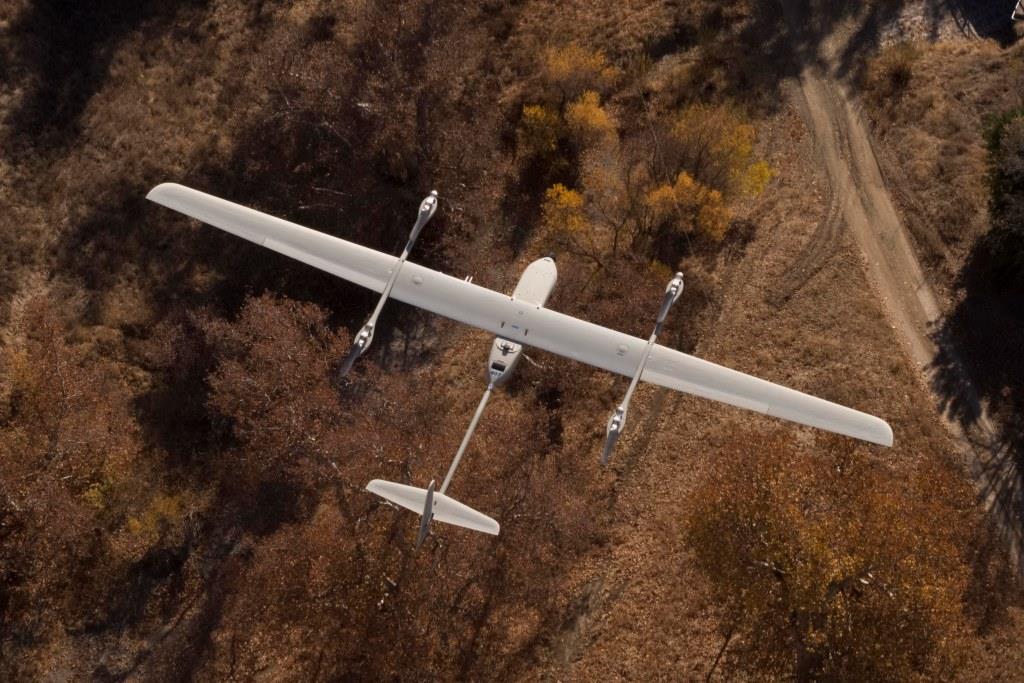
.JPG)
